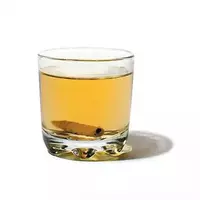Mescal

The older brother of tequila is considered mezcal, which is the same strong alcoholic drink. Mezcal owes its appearance to the Spanish conquistadors, who used distillation to make local wines. Like tequila, mezcal is produced on the basis of a plant of the genus agave, however, unlike tequila, which is made from blue agave, mezcal is made from five types of cultural agave with the addition of wild subspecies.
Basically, the strength of the mezcal is approximately 40 degrees. This drink has a stronger taste and aroma compared to tequila, and its different types differ from each other not only in terms of these parameters, but also in color.
High-quality mezcal is on a par with tequila, but in terms of the number of species it is really inferior. So, earlier only 2 types of mezcal were produced in general: ordinary (25%) and mezcal Refino - 55%. Currently, more than five hundred species are known for tequila, and only just over a hundred mezcal. Without aging, mezcal is called Natural, when aged for more than a year - Aniejo. The most famous brands of mezcal are Miguel de la Mezcal, Cusano Rojo Mezcal and Monte Alban Mezcal.
Today, in connection with the global popularization of tequila, interest and mezcal are growing. By the way, like tequila, this drink is accompanied by rather interesting rituals and myths, among which one of the most common is the myth of a worm, necessarily present in a bottle with a real mezcal.
In reality, the worm is not a traditional attribute of this drink, but a marketing ploy that was used in 1940 by mezcal manufacturers to attract consumer attention. Moreover, they succeeded with great success - at the moment in some varieties of mezcal there is a worm. This worm is called guzano - in fact, it is a caterpillar of the Bombix agavis butterfly or Hipopta Agavis. Less prestigious is the white worm, as it lives in agave leaves, but the red worm lives in the very core of the agave, which is why it is considered the best.
It is customary to drink mezcal, as is tequila - pouring into a high stack, licking salt, draining it with a volley and snacking on a slice of lemon or lime. A special chic is the observance of the established tradition of drinking this drink - the use of mezcal with a worm. To do this, the worm is divided equally and distributed to all participants in the ceremony. By the way, it does not pose a danger to human health at all, since it is carefully checked and kept in alcohol for at least one year.
mezcal 208 kCal
Energy value of mezcal (Ratio of proteins, fats, carbohydrates - ju):
Proteins: 0 g (~ 0 kCal)
Fats: 0 g (~ 0 kCal)
Carbohydrates: 34.83 g (~ 139 kCal)
Energy ratio (bj | y): 0% | 0% | 67%
 Español
Español Français
Français Português
Português Русский
Русский 简体中文
简体中文 繁體中文
繁體中文 日本語
日本語 한국어
한국어 العربية
العربية Türkçe
Türkçe Қазақ
Қазақ Deutsch
Deutsch Italiano
Italiano Українська
Українська
